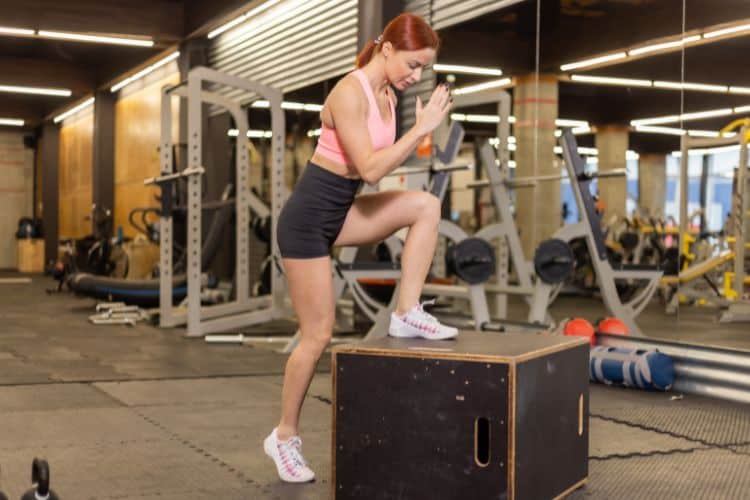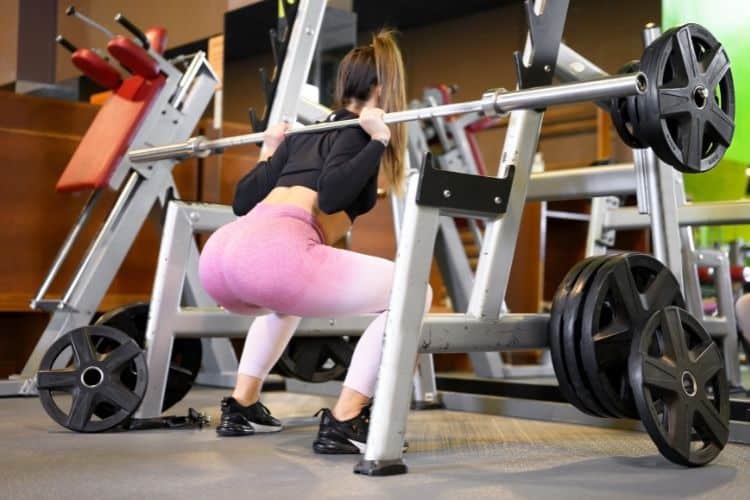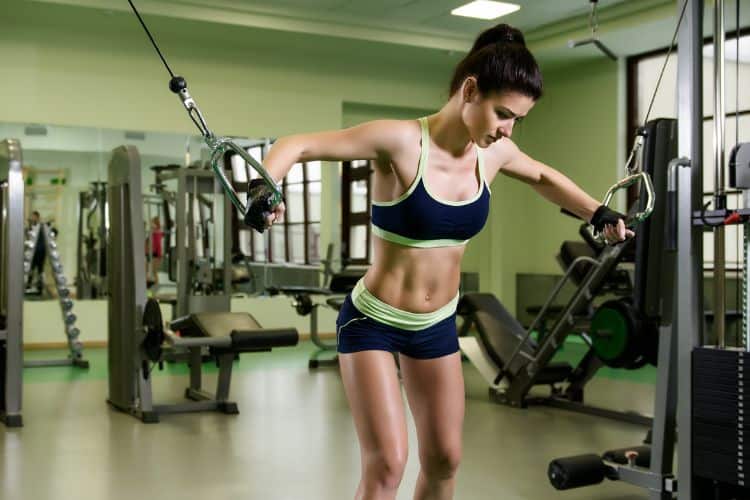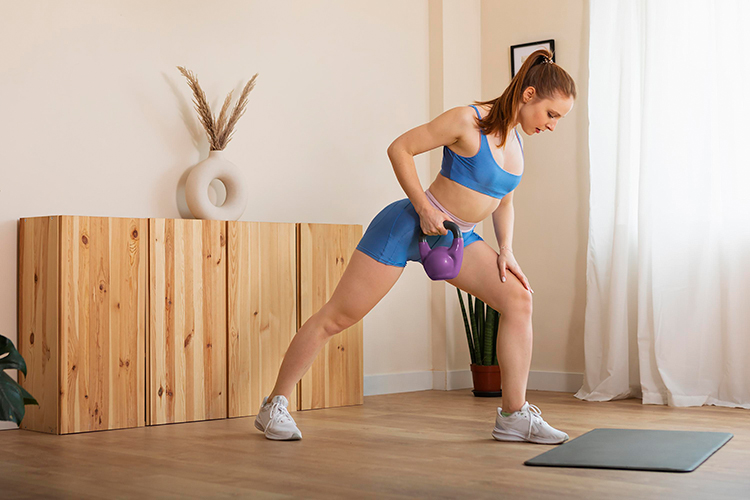Sign up for workout ideas, training advice, reviews of the latest gear and more.






In today’s fast-paced world, finding time to go to the gym can be challenging, especially for women who juggle multiple responsibilities. Fortunately, you don’t need a gym membership to get in shape. Free weights, such as dumbbells and kettlebells, offer a versatile and effective workout solution that you can do at home. Whether you’re looking to tone up, build muscle, or enhance overall fitness, this guide will help you craft a balanced, full-body routine that fits your schedule.
Free weights are an excellent tool for women looking to build strength and burn calories. Unlike machines, which isolate muscle groups, free weights engage multiple muscles and improve coordination and stability. Here’s why they’re particularly effective:
When using free weights, you have to stabilize your body and control the weight through a range of motion. This engages more muscles than machines, leading to better overall development. For women aiming to tone muscles and increase strength, this translates to a more efficient workout.
Free weight exercises mimic everyday movements like lifting, pushing, and pulling, improving functional strength. This can make daily tasks easier and reduce the risk of injury.
Free weights allow for easy adjustments in weight, intensity, and variety. Whether you’re a beginner or more advanced, you can tailor your workout to match your fitness level and goals. This flexibility makes them a perfect fit for home workouts.
To get started, you don’t need much. A few basic pieces of equipment are enough to give you a challenging workout.
Dumbbells are the cornerstone of any free weight workout. You can start with a lighter set (5-10 pounds) for beginners and gradually increase the weight as you gain strength. If you’re more advanced, consider having a range of weights to challenge different muscle groups.
Kettlebells are another excellent option, especially for exercises that require more dynamic, full-body movement. They are great for functional strength and cardio conditioning.
While not technically a “free weight,” resistance bands complement your weight training by adding tension without extra bulk. They’re great for glute and leg exercises.
A balanced workout routine should target all the major muscle groups: legs, glutes, core, back, shoulders, and arms. Below, we’ve outlined a sample routine that incorporates a mix of upper body workout, lower body, and core exercises. You can complete this workout 3-4 times a week for the best results.
Before diving into weight training, it’s crucial to warm up to prevent injury and prepare your muscles. Perform a light cardio warm-up like jogging in place, jumping jacks, or high knees. Follow this with dynamic stretches like leg swings or arm circles to increase mobility.
Strengthening the lower body is key for building muscle and enhancing metabolism. These exercises target your glutes, hamstrings, quads, and calves.
The goblet squat is an excellent exercise for the lower body, focusing on the quads and glutes while engaging the core for stabilization.
This move targets the hamstrings and glutes, while also strengthening the lower back.
Lunges workout help tone the legs and glutes while also improving balance and stability.
Building upper body strength is essential for maintaining muscle balance and supporting overall fitness goals. These exercises target your chest, back, shoulders, and arms.
This exercise primarily targets the chest and triceps but also engages the shoulders.
This move is perfect for strengthening the upper back and biceps.
For strong, defined shoulders, the shoulder press is a must-do exercise.
A strong core not only contributes to a toned midsection but also improves overall stability and supports better posture.
This exercise strengthens the obliques and helps define the waist.
Adding a dumbbell to sit-ups intensifies the workout, engaging both the upper and lower abs.
This exercise engages both your core and upper body, particularly the back and shoulders.
After completing your workout, it’s important to cool down with some light stretching to promote flexibility and aid in recovery. Focus on stretches for your legs, arms, back, and shoulders to loosen up any tightness and prevent stiffness.
Consistency and correct form are key to getting the most out of your workouts. Here are some tips to help you stay on track:
Especially if you’re new to weightlifting, prioritize proper form over how much weight you’re lifting. This reduces the risk of injury and ensures you’re targeting the right muscles.
To continue seeing results, gradually increase the weight or number of reps. This principle, called progressive overload, is essential for building strength and muscle.
Your muscles need time to recover, so be sure to include rest days in your routine. Rest helps your body repair and grow stronger, preventing overtraining.
Staying hydrated and eating a balanced diet that includes plenty of protein, healthy fats, and complex carbs will support your strength training and overall fitness goals.
Here’s a sample 3-day workout schedule using the exercises outlined above:
You can modify this schedule based on your fitness level or available time.
At-home free weight workouts for women are a convenient and effective way to build strength, burn calories, and stay fit without needing a gym membership. With just a few basic pieces of equipment and a well-structured routine, you can achieve your fitness goals in the comfort of your home.
Stay up to date on the latest women’s health, fitness and lifestyle trends and tips.